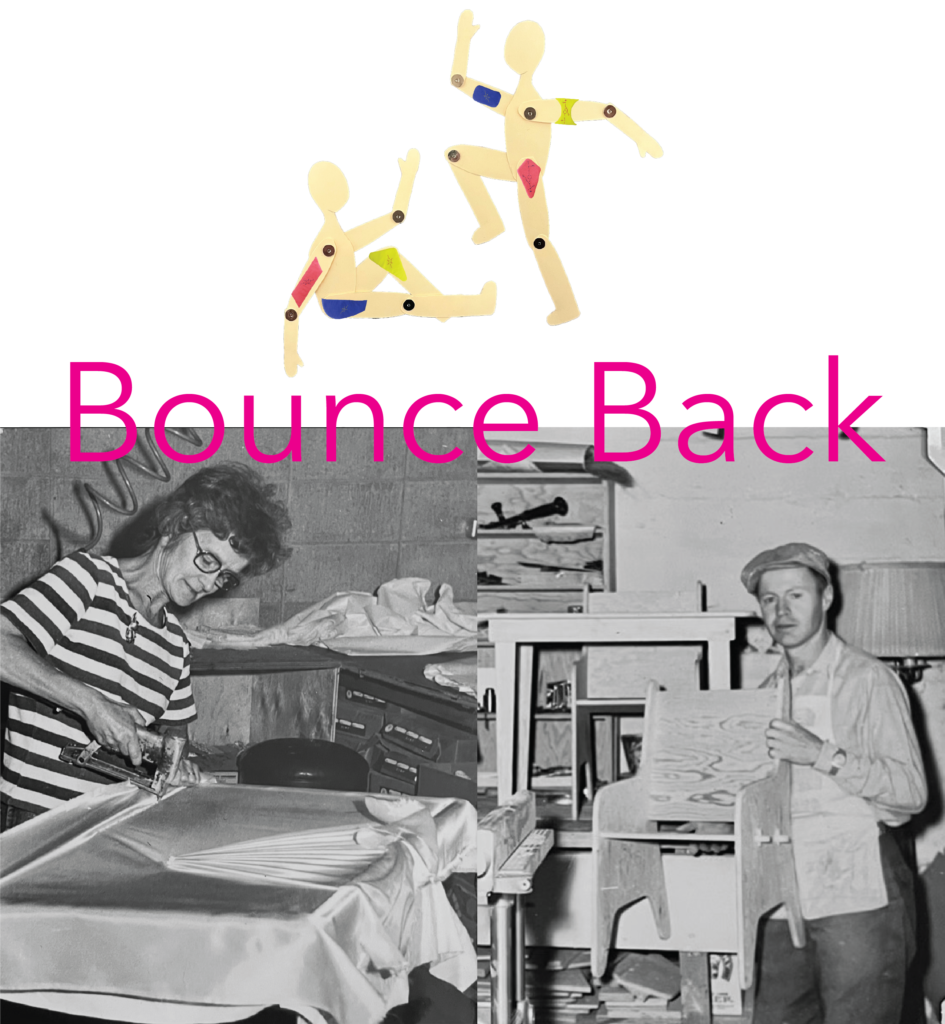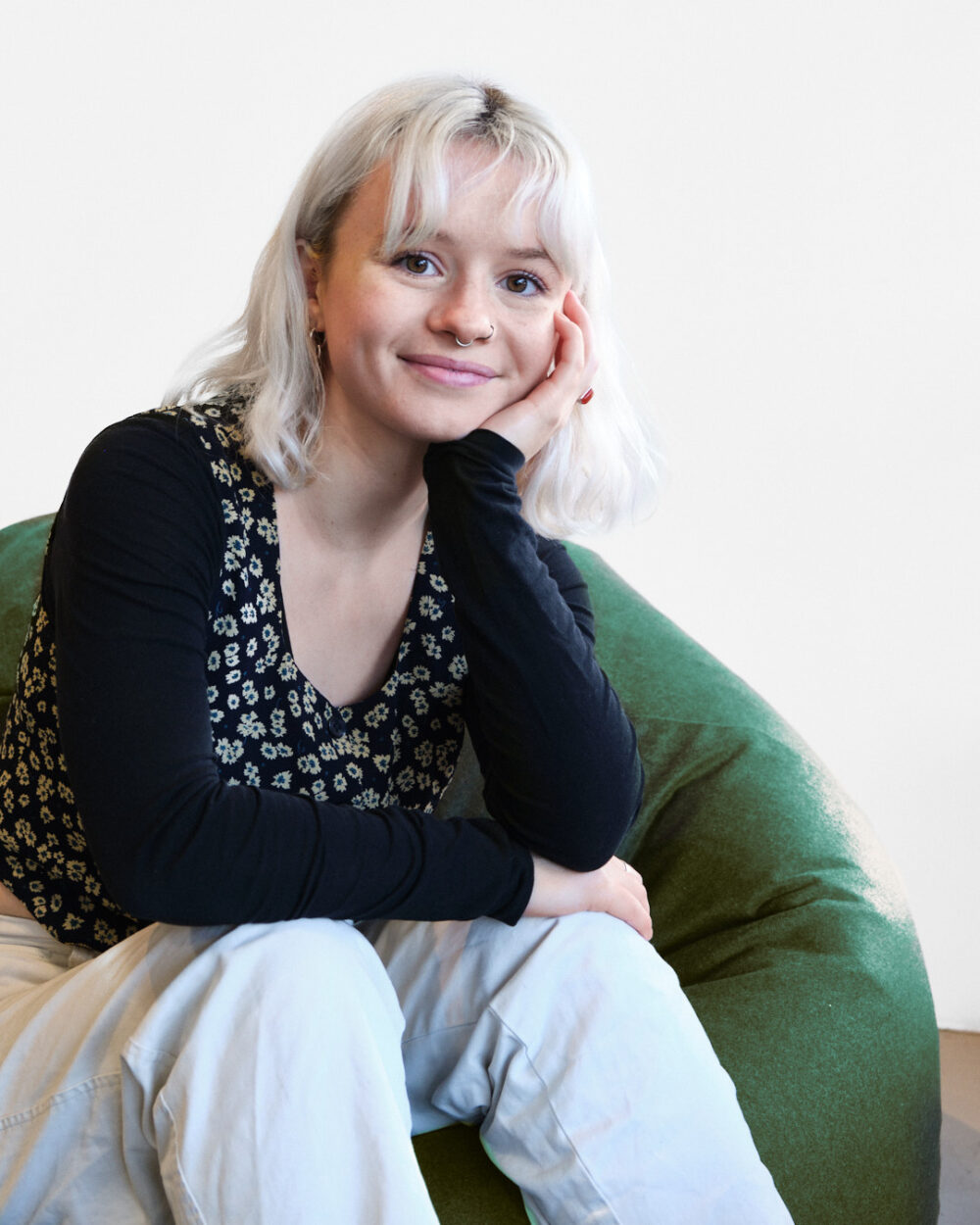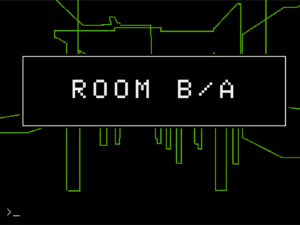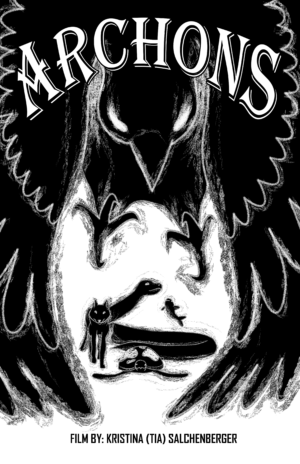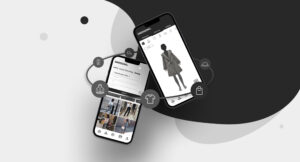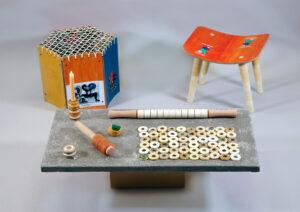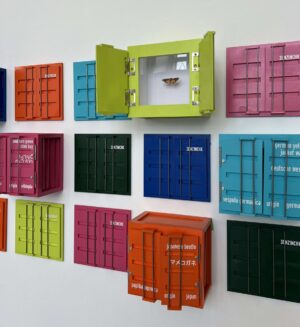Bounce Back
Danielle Morrison
See it On Campus: Level 2
Visitor InfoAward Recipient
ECU Health Design Award for Innovation – Honourable Mention
Reimagining accessibility through the somatic experience of sound
__________________________________________________________________________________________________________________
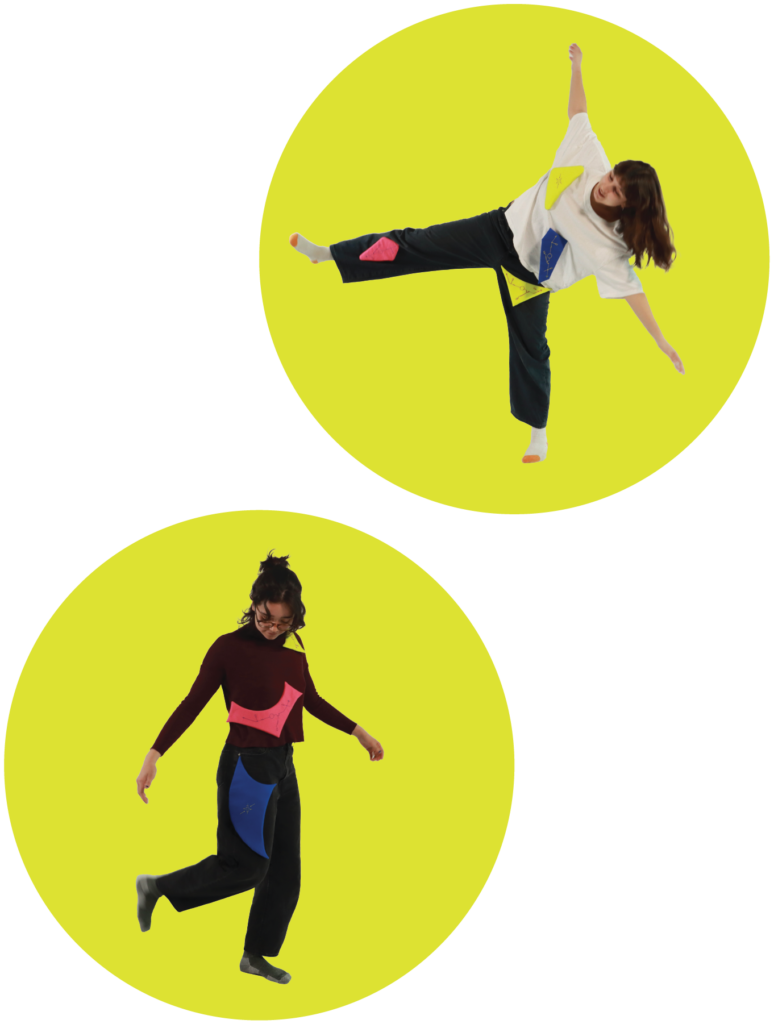
Bounce Back challenges conventional notions of accessibility by shifting responsibility from the individual to the community. Through the lens of the Deaf community, this project reimagines access and questions the value of sound, envisioning a world where vibrations are experienced in place of sound.
Inspired by the proud Deaf identities of my grandparents, Bounce Back is informed by their experiences of existing in a hearing world with intuitive adaptations that embrace rather than alter their Deafness. This project aims to move beyond traditional accessibility tools that adapt Deaf individuals to the hearing world, and instead rethinks how we can adapt to them.
At its core, Bounce Back fosters human connection through a new approach to experiencing vibrations as a means of communication. The project employs colourful wearable technology to facilitate playful interactions that allow individuals to adapt and learn from other ways of being.
__________________________________________________________________________________________________________________
Bounce Back is a series of different shaped patches that can be pinned to your clothes to expand human connection beyond the verbal and aural sound experience.
The patches contain three main elements: the social engagement between two users, the visual language that communicates to others that you are actively a part of an accessibility interaction; and the technology that encourages users to imagine sound beyond the auditory.
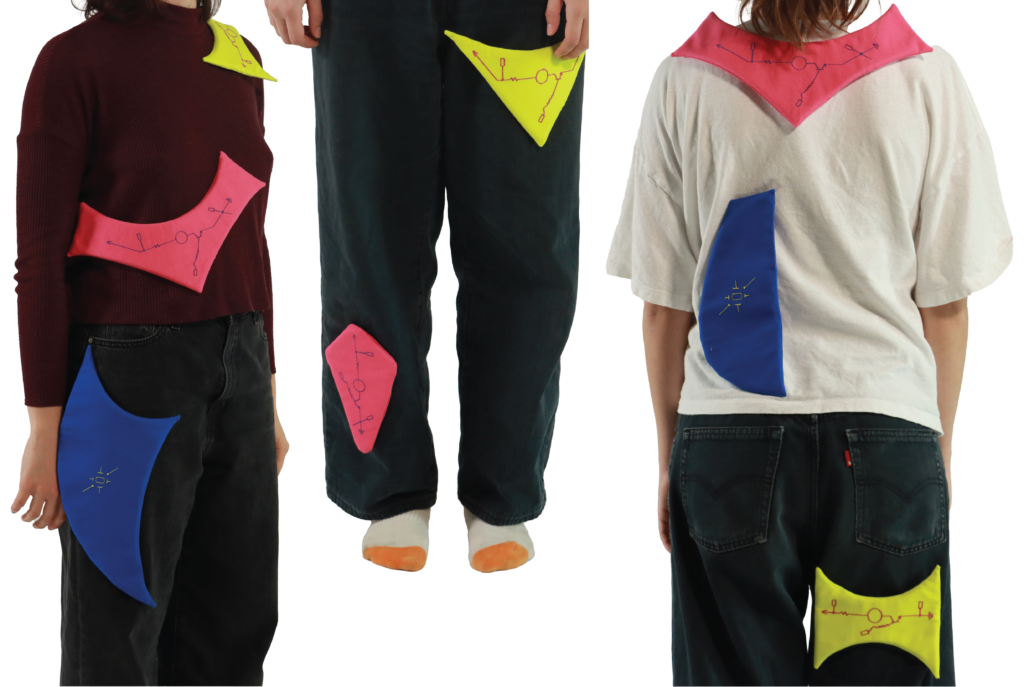
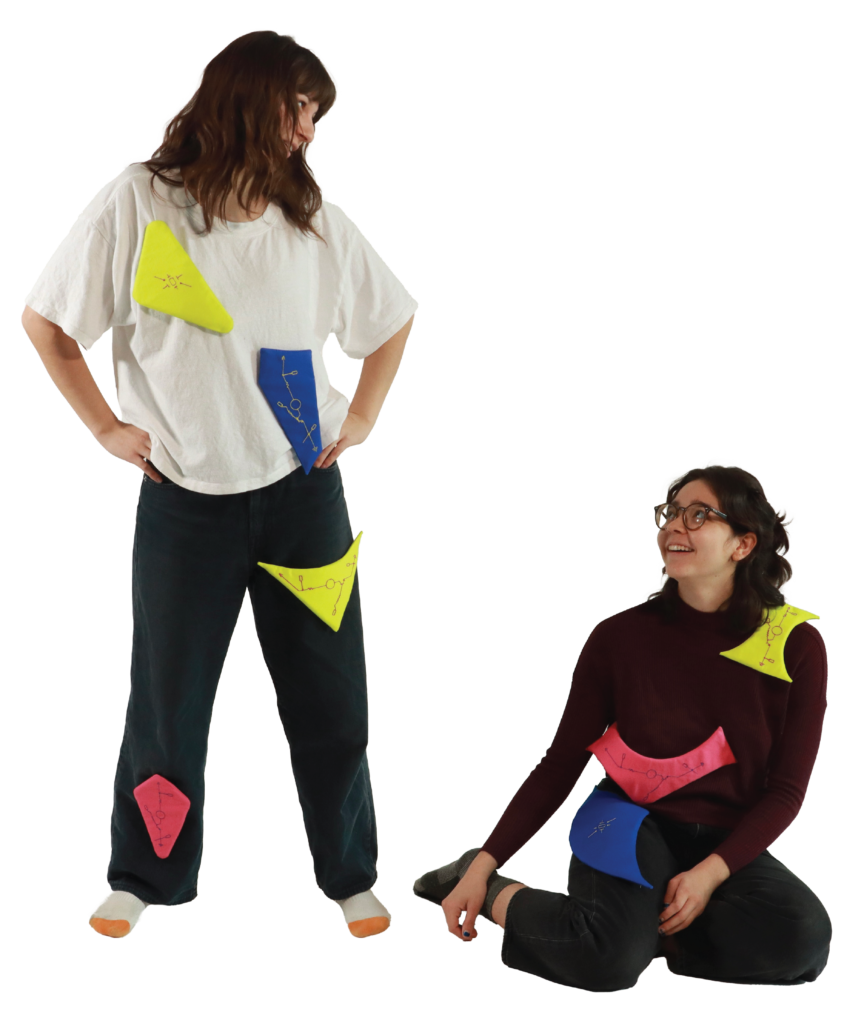
Social Engagement
I believe accessibility should be more of a community effort, so I wanted the patches to facilitate an interaction between two people, challenging the notion that the responsibility of accessibility should only fall on the individual.
I imagine it being a way to alert someone of your presence or wanting to get the attention of someone. An example of an interaction I have in mind would be someone notifying a focused person at work by sending them a small vibration through the patches.
Visual Language
The next element of the patches is the visual language. This is what helps communicate the narrative of shared responsibility.
The colourful, playful patches stand out when wearing them with everyday clothes to communicate to others that you are actively making a choice to share some of the responsibility for accessibility. They can be pinned anywhere on the body and allow users to choose where they want to feel sound.
The patches are also embroidered with circuit drawing-inspired symbols to imply the technology that is embedded within them.
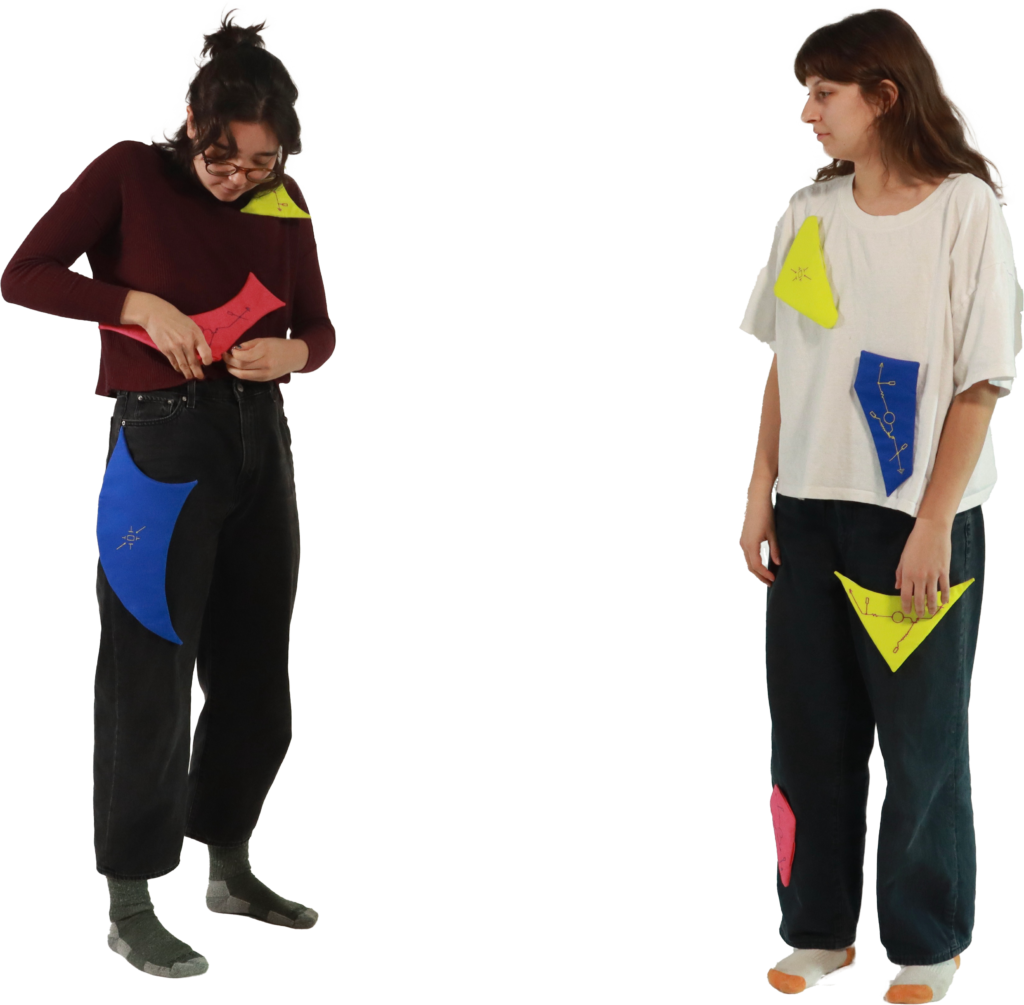
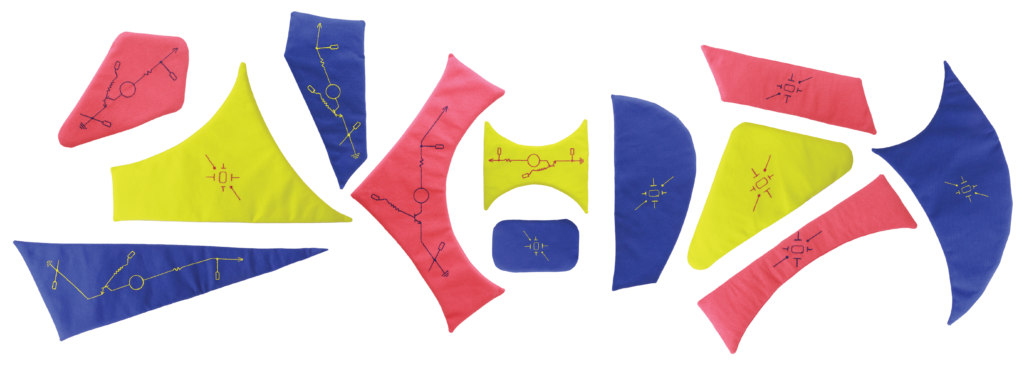
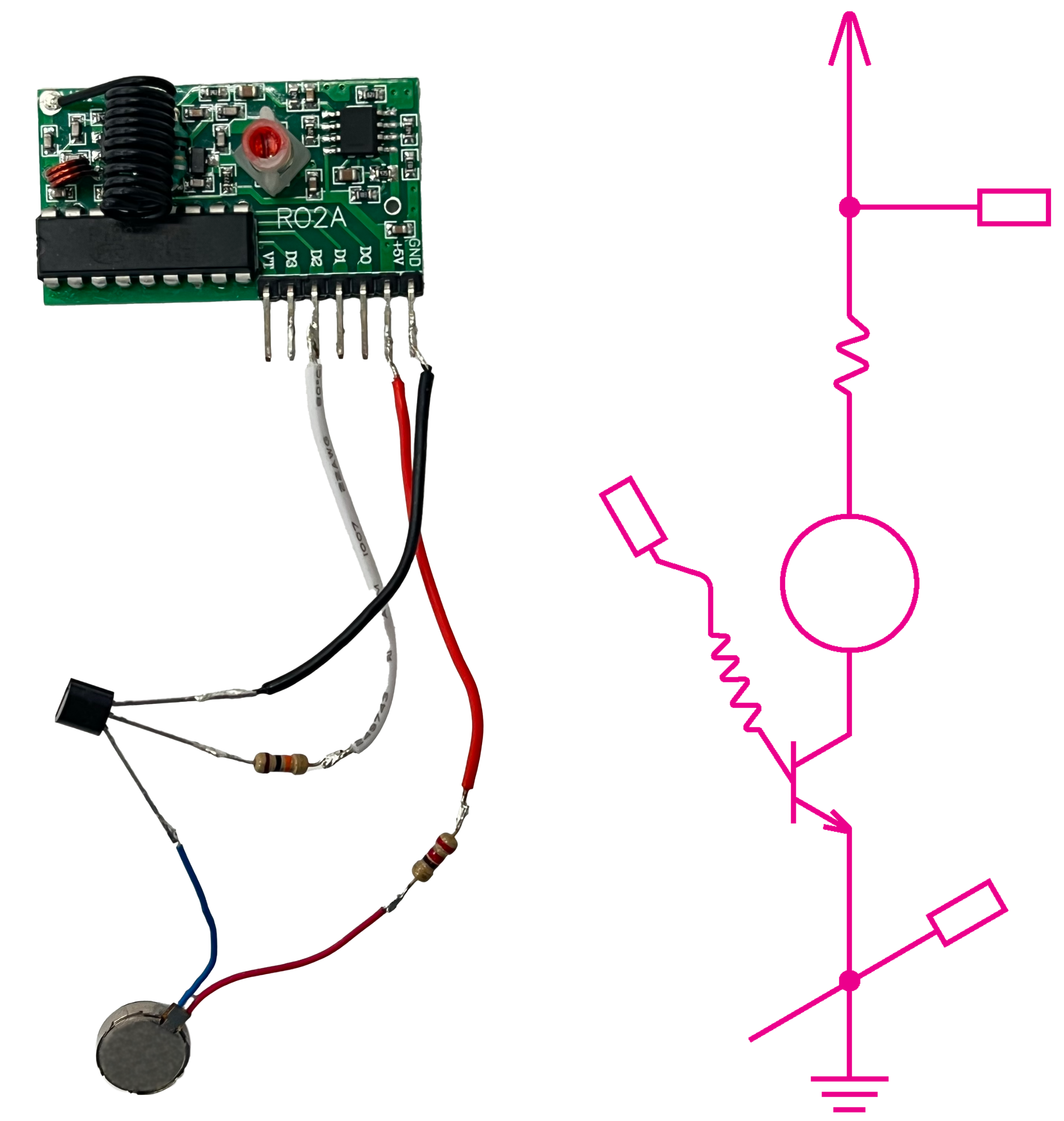
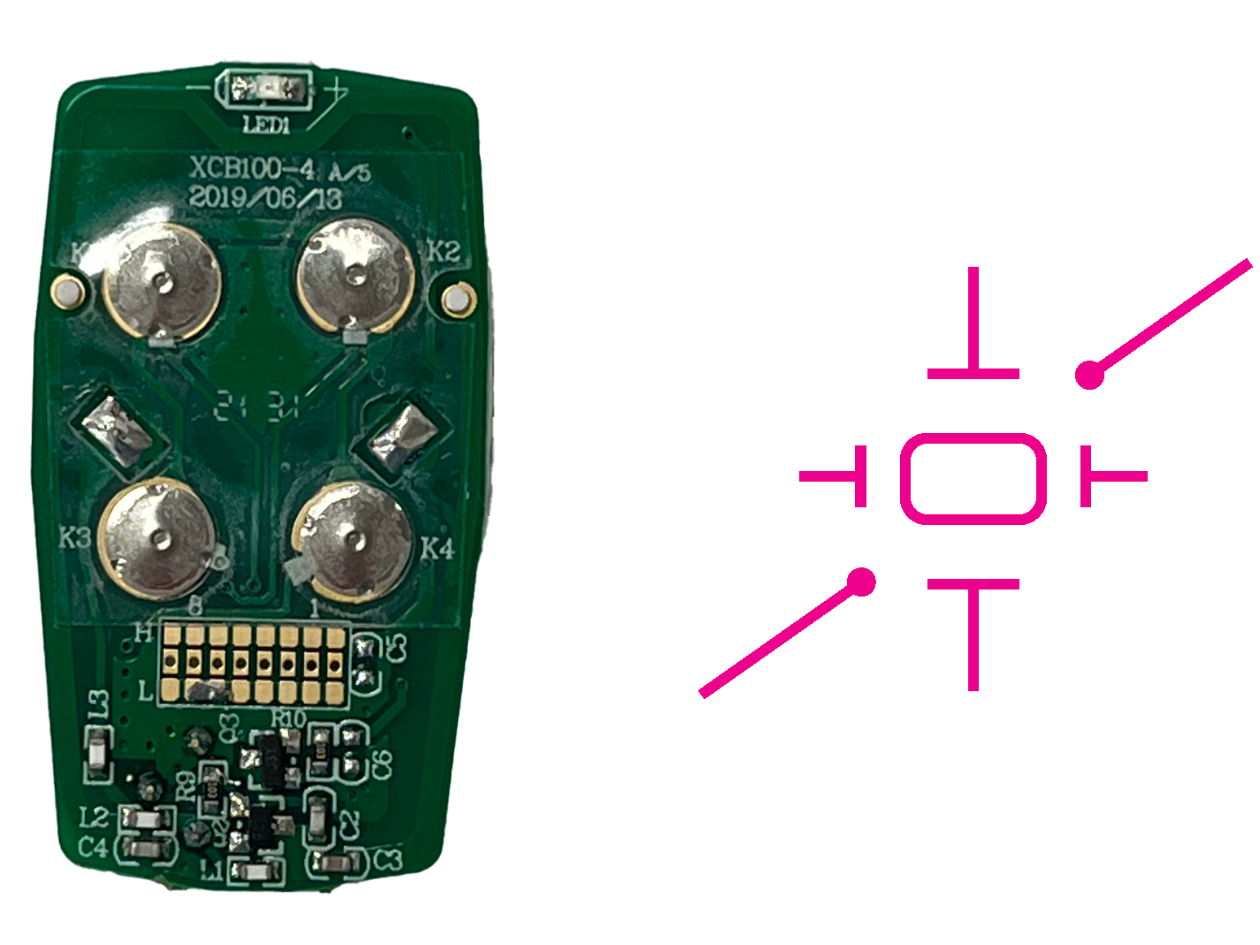
Technology
The final element of the patches is radio frequency electronics, or RF for short. Electronics are not my wheelhouse, nor did I think that they really communicate the simple, intuitive nature of my grandparents’ adaptations. But I wanted a way to help people engage with the idea of experiencing sound physically, without making my project feel cold and unapproachable through unfamiliar technology. The RF electronics satisfied my challenges because it is a simple technology and exists in an everyday item we are all familiar with – a garage door opener.
One person would have the patch that has an RF transmitter remote, and the other person would have the patch with the RF receiver and a small haptic motor that vibrates when activated by the remote.
Together, the visual language, the electronics, and the interaction between two people challenges the notion that accessibility is the responsibility of the individual, but should be a community effort, and the way to approach this is through bold questioning of our current perceptions as a way to understand other ways of being.
So, with all these ideas in mind, what is the value of sound?
